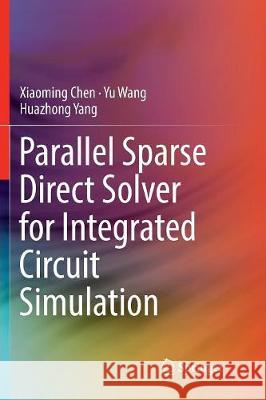Parallel Sparse Direct Solver for Integrated Circuit Simulation » książka
topmenu
Parallel Sparse Direct Solver for Integrated Circuit Simulation
ISBN-13: 9783319851525 / Angielski / Miękka / 2018 / 129 str.
Parallel Sparse Direct Solver for Integrated Circuit Simulation
ISBN-13: 9783319851525 / Angielski / Miękka / 2018 / 129 str.
cena 374,81 zł
(netto: 356,96 VAT: 5%)
Najniższa cena z 30 dni: 375,70 zł
(netto: 356,96 VAT: 5%)
Najniższa cena z 30 dni: 375,70 zł
Termin realizacji zamówienia:
ok. 16-18 dni roboczych.
ok. 16-18 dni roboczych.
Darmowa dostawa!
Kategorie:
Kategorie BISAC:
Wydawca:
Springer
Język:
Angielski
ISBN-13:
9783319851525
Rok wydania:
2018
Wydanie:
Softcover Repri
Ilość stron:
129
Waga:
0.20 kg
Wymiary:
23.39 x 15.6 x 0.76
Oprawa:
Miękka
Wolumenów:
01
Dodatkowe informacje:
Wydanie ilustrowane











